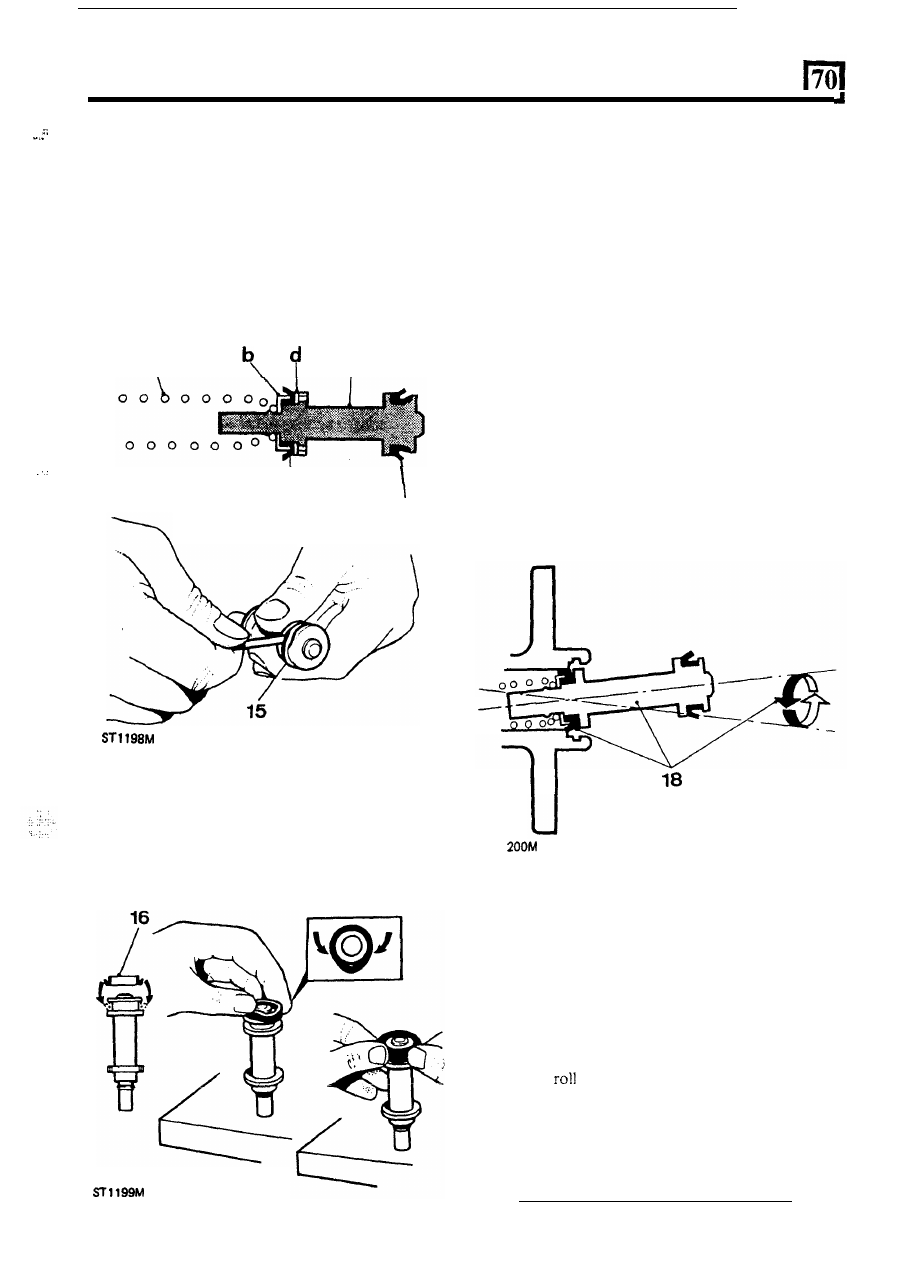Defender 90 / 110 / 130. Manual - part 121

BRAKING
S
YSTEM
Renewing secondary plunger seals
14. Remove the following items from the plunger:
f
,*:
(a) spring
(b) seal retainer
(c) recuperating seal
(d) washer
outer seal.
15. Taking care not to damage the plunger prise off the
a
\
14
I
.
I
C
I
15
16.
Fit a new outer seal using the same procedure as
for the primary plunger outer seal by squeezing the
seal between the finger and thumb into an ellipse
and press the raised part
of the seal over the flange
using the fingers
of the other hand.
17.
Fit the recuperating seal assembly parts
in the
reverse order
of removal.
Assembling master cylinder
It is important that the following instructions are
carried out precisely, otherwise damage could be
caused to the new seals when inserting the plungers into
the cylinder bore. Generous amounts of new brake
fluid should be used
to lubricate the parts during
assembly. Never use old fluid or any other form
of
cleaning
and
lubricating
material.
Cleanliness
throughout is essential.
18.
Clamp the cylinder in a vice and lubricate the
secondary plunger seals and cylinder bore. Offer
the plunger assembly to the cylinder until the
recuperation seal
is resting centrally in the mouth
of the bore. Gently introduce the plunger with a
circular rocking motion, as illustrated. Whilst
ensuring that the seal does not become trapped,
ease the seal into the bore and slowly push the
plunger down in one continuous movement.
ST 1
19.
20.
21.
22.
23.
24.
Fit the primary plunger assembly using the same
method as for the secondary plunger. Press the
plunger down and secure the assembly with the
plastic circlip.
Slowly press the plunger down the bore and fit the
secondary plunger stop-pin.
Lubricate new seals and
fit to the inlet ports (large
diameter downwards).
Press the reservoir into position and secure with
the
two
pins.
Fit a new washer to the reservoir cap and press the
plastic baffle into position inside the cap.
Fit a new rubber seal to the cylinder flange and fit
the master cylinder to the servo and secure with
two nuts and spring washers.
13